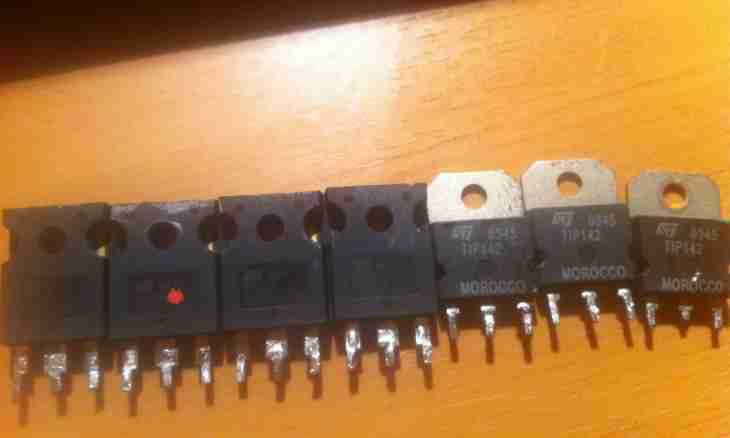Diodes and transistors – basic elements of radio engineering schemes, and elements the active, transforming signal passing on a chain. Differences in the principle of work between them are very essential, also seriously they differ and externally therefore even the person, unfamiliar with radio engineering, is capable to distinguish them from each other.
It is required to you
- - any faulty radio engineering payment;
- - scheme, for example, TV;
- - it is a little curiosity.
Instruction
1. In principle, already proceeding from the name, any person a little familiar with foreign languages can define differences of these elements of radio engineering schemes. The diode – the one who has something, number equal to two. The transistor – the converter though this name took root only when lamp elements of schemes became semiconductor. Earlier it was called the triode, that is the one who has something, number equal we rub. It would be more correct to group these names as follows: lamp devices as diode triode, and semiconductor as gate transistor.
2. To the diode is intended to pass a signal on a chain only in one direction therefore it still is called "gate". It has only two contacts – entrance and output (the anode and the cathode) therefore it is "di". On radio engineering schemes the diode is designated as the triangle set by top against a short stick. Four diodes connected "the head to a tail" form the vypryamitelny bridge transforming alternating current to constant. Earlier the diode reminded the old woman Shapoklyak's hat through pierced by a needle, now it can be the ordinary cylinder with two "legs", very similar to other element of the radio engineering scheme - resistance. Not to mix one with another one tip of the diode (in the direction of which there is current) mark red paint or leave an icon of the diode directly near it on a substrate of the printed circuit board.
3. The transistor – the converter. As a rule, it is the amplifier. How many in the scheme of the amplifier of transistors, there is so much also cascades of strengthening. Transformation happens because between entrance and output contacts one more settles – the managing director. Changing tension at it, it is possible to accelerate or slow down the movement of electrons, strengthening or weakening a signal. In the transistor three contacts, therefore it also "TRIODE". In the semiconductor device they are called the emitter (exit), a collector (entrance) and base (control element). On the scheme the semiconductor triode is designated as a vertical stick (base) with one horizontal contact and two inclined planes located by the principle "a hade is equal to the angle of reflection". All this "disgrace" is circled with a circle. That stick that has an arrow, is called the emitter. Depending on crystal type the transistor can be type P-N-P or N-P-N therefore the arrow of the emitter can or rest against a stick of base or "run away" from it. Externally the transistor is similar to the fighting tripod of Martians familiar to you according to the book by G. Wells "War of the Worlds" or according to its screen versions though transistors more often meet the flat case.

